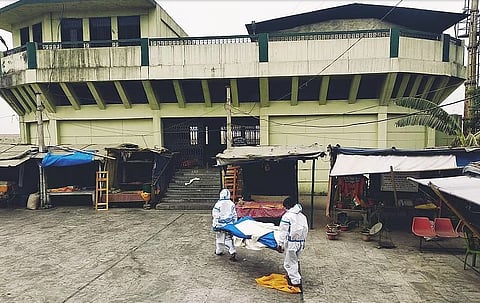Broken lifeline: How COVID-19 halted India’s improving life expectancy in its tracks
On March 13, 2020, Government of India’s Press Information Bureau (PIB) released the latest life expectancy data of the country. Quoting estimates of the Office of the Registrar General & Census Commissioner, the pib release said, “The average life expectancy at birth has increased from 49.7 during 1970-75 to 69.0 in 2013-17, registering an increase of 19.3 years during this period.” Life expectancy at birth is a wholesome indicator of a country’s development—in India’s case, the death rate is decreasing, overall health parameters have improved, and citizens are living longer. The country has been reporting a consistent rise in life expectancy. A dip in it is now unimaginable.
But this good news was delivered at a time the world was about to experience a virus’ killer potency. On March 11, hardly 48 hours before the PIB release came, the World Health Organization declared the outbreak of COVID-19 pandemic; India had just 60 positive cases. Only a miniscule part of the population had memory of a pandemic with mortal consequences. For more than half a century, Indians got accustomed to longer and healthy lives. The phenomenon of pandemics killing millions, and even causing a dip in world population, was a reality of the past, without a chance recurrence in the future.
Five years later, on May 7, 2025, the government released the latest data on life expectancy—it has dipped by 0.2 years. “Expectation of life at birth for India has been estimated at 69.8 years for the period 2017-21, exhibiting a decrease of 0.2 years from 2016-20.” The period considered for this data coincides with two worst years of the pandemic for India. Is this the cause for the dip in life expectancy? The official data does not say this outright. But, it has definitive hints that the virus could be the cause, even if it is not officially attributed.
According to the official data, the death rate increased from 6.0 in 2020 to 7.9 in 2021. There was a steep spike in deaths: from 8.1 million in 2020 to 10.2 million in 2021—an increase for the first time in nearly 55 years. The government has attributed 0.6 million deaths to covid-19. But the data on “excess deaths” during this period raises doubts. Deaths attributed to respiratory disease spiked from 181,160 in 2020 to 305,191 in 2021. Further, deaths due to diseases of the circulatory system also increased from 580,751 to 714,072 during the same period. There is no explanation on the reasons for these unprecedented spikes. These conditions have similar symptoms to those of COVID-19.
Researchers from the International Institute for Population Sciences (IIPS) analysed the data to conclude that in 2021—the worst year in terms of COVID-19 related mortality—India lost 1.6 years of life expectancy. The impact is gendered; the IIPS researchers say that due to the decline in male life expectancy, the gender gap in 2021 has widened by 3.2 years, as against 2.8 years during the pre-pandemic period. The gap is comparable to the 2013 level. In other words, we lost a decade of progress. In September 2022, the UN’s “Human Development Report 2021-2022” also estimated that India’s life expectancy dipped from 69.7 years in 2019 to 67.2 in 2021.
According to this UN report, there was a dip in life expectancy in 70 per cent of countries in the world, attributed to the pandemic. It also reported that 85 per cent of countries, including India, recorded declines in incomes during the pandemic. The real human toll of the pandemic will unfold over time, notwithstanding definitional whitewashing.
As we recover from the economic losses, what alarms one is the UN report’s another finding, “Despite a significant economic recovery in 2021, the health crisis intensified, with two-thirds of countries recording even further reductions in life expectancy at birth.” It calls for retrospection in the way we manage post-pandemic situations. The pandemic is a lingering, hydra-like, socio economic malaise.


